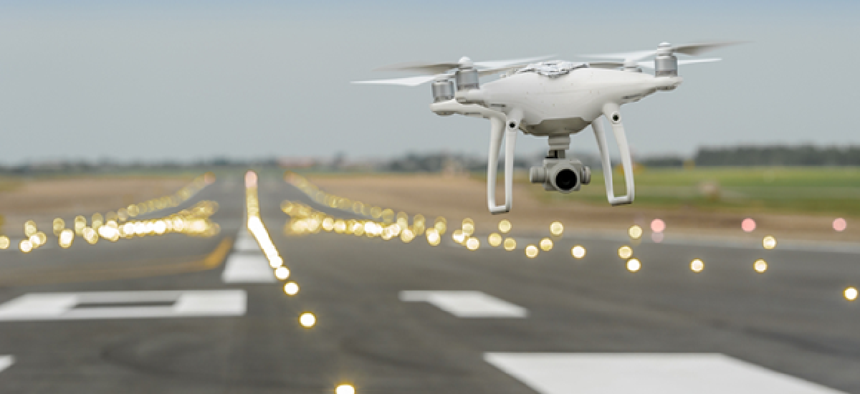New York opens first leg of drone test corridor


Connecting state and local government leaders
An agreement with NASA will support the development of a 50-mile test corridor and a facility to certify the cybersecurity and air worthiness of drones.
New York Gov. Andrew Cuomo turned the spotlight on the state's recent investments in drone infrastructure research by announcing the opening of the first leg of an unmanned aerial system test corridor, a test facility and a deal with NASA to support the drone industry in the Mohawk Valley.
The 50-mile UAS traffic management (UTM) corridor is designed to test beyond-visual-line-of-sight drone operations. It currently consists of a five-mile circle around the Rome, N.Y.-based Griffiss International Airport, one of the seven original Federal Aviation Administration test sites.
The corridor will allow companies to test and validate sensors, radars and data integration platforms that support detection of small drones flying at very low altitudes beyond the line of sight.
The corridor also will include the National UAS Standardized Testing and Recording (NUSTAR) facility that is intended to operate as a testing service that certifies the cybersecurity and airworthiness of small civilian drones. Currently, standards are lacking for UAS airworthiness and certification.
NUSTAR will also support the FAA's mission to develop a sense-and-avoid system, according to the request for information issued by the Northeast UAS Airspace Integration Research Alliance (NUAIR).
NASA will work with the research alliance implementation team in the design and development of the testing facility.
The full 50-mile UTM corridor between Syracuse and Griffiss Airport in Rome is expected to be completed by the end of 2018.
Gov. Cuomo also announced that NASA and NUAIR formalized their partnership to develop the UTM corridor and build the NUSTAR test facility. The agreement will also give the space agency opportunities "to advance research and development in critical technologies such as communication, navigation, and large scale UAS traffic management," NASA officials said.
In addition, the governor announced a related $5 million investment in New York-based Gryphon Sensors for a mobile UTM command center called Mobile Skylight, which provides 3-D detection of low-flying, small UAS at a distance of up to 10 kilometers. Contained in a van that can be driven anywhere, the unit can be rapidly deployed for drone security and traffic management applications, including special event security, first responder and search and rescue operations as well as infrastructure and utility inspection.
NEXT STORY: A drone that can stay aloft all week





